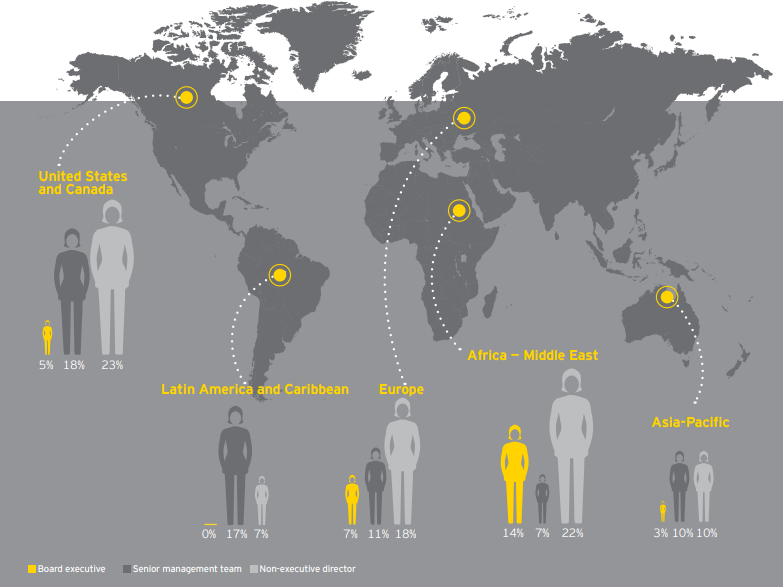Do we really care about both climate change and gender equality? If yes, please continue! If no, abort mission! World Resources Institute (WRI) has released comprehensive studies since 2016 showing that women’s access to decision-making process, low-carbon industry, infrastructure and transportation can boost energy efficiency, investments in renewable power, and reduction in carbon emissions.
Here is the report for women in power and utilities indicating the top 20 most gender-diverse energy utilities outperform less diverse ones (2015) although women are having less executive jobs all over the world. This graph is showing the percentage of women in strategic roles.

In this article, how to increase women’s participation to sustainable infrastructure and how they can affect low-carbon, sustainable development are discussed. At the end, there are three suggestions to enhance women’s participation and in turn, environmental outcomes and social benefits.
1. Level the playing field and facilitate skill-building.
2. Hire at all levels and across the supply-chain.
3. Foster an inclusive work environment.
(details in the article)
Lastly, the institute also released a guideline to create more diverse participation for panel discussions which are sometimes exhausting if you’re not in the privileged group. I will put some of the suggestions here:
1. Expand your network. We build panels from our existing networks, which often leads us to rely on
the same people, limiting the views and experiences expressed during a panel. Identify networks of
people typically underrepresented in your professional world and invest effort in developing
relationships with them. This may be a long-term endeavor, but this broader base of expertise and
perspectives can enhance future events, as well as projects.
2. Reach out. Once you have a concept for an event, reach beyond your immediate team to identify
speakers from this broader base, making it clear that you seek people with a particular technical
expertise who also bring varied perspectives in relation to the topics that are important to
represent.
3. As an organizer, commit yourself to improving your selection process. Do not put the responsibility
for engaging panelists from underrepresented groups on someone else from that group. Reach out
yourself, build a rapport with potential speakers and engage in a meaningful dialogue on the topic
to ensure that the invitation is genuine.
4. As a panelist, commit yourself to sharing the stage with a diverse panel. If you are invited to speak
on an externally-organized panel, ask the organizers who will be joining you. If you notice the panel
is homogenous, ask the organizers if they have considered including speakers from
underrepresented groups. Be prepared to offer suggestions on who the organizers could invite in
order to build a more diverse panel.
5. Mobilize resources and support. Speakers from underrepresented groups may face the issue of
underfunding. Set aside budget to ensure you are able to support their participation. In determining
the timing of your event, you may also want to check the availability of these speakers and adjust as
necessary to accommodate their participation. If you are organizing a longer event, such as a
conference or workshop, survey participants to understand what needs they may have, particularly
related to child care, to be able to attend and effectively engage.
6. Avoid tokenism. Invite speakers from a variety of relevant backgrounds. If only one member of an
underrepresented group is on the panel, avoid asking that person to speak for that group. Ask that
person to provide their insights and expertise on the subject being discussed. If you do want to ask
the person to ‘represent’ a particular perspective, prep the person for the question in advance and
preface the question with why and how it is relevant to the discussion. However, make every effort
to have a fully diverse panel so even a last minute drop out won’t leave you with a homogenous
group.
Adapted from:
https://hbr.org/2014/01/theres-no-excuse-for-all-white-male-panels/
https://netimpact.org/blog/6-steps-for-planning-a-diverse-conference
